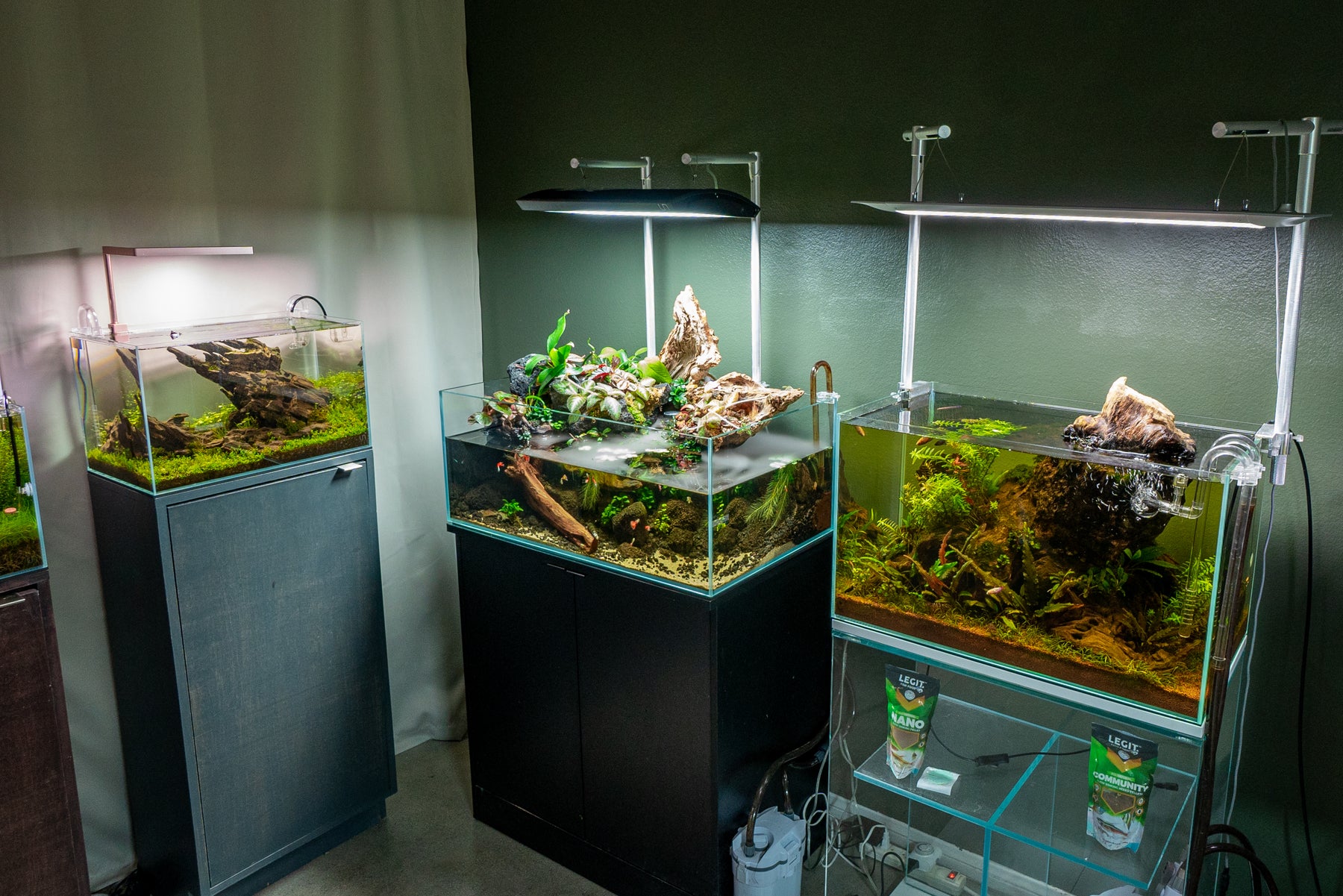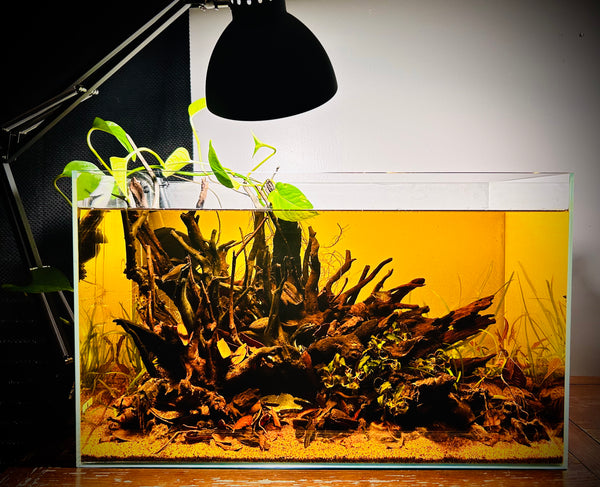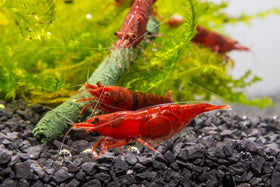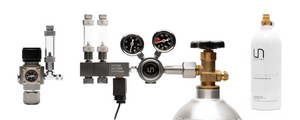
Top 5 Aquascaping Trends: Innovative Ideas for Your Aquarium
Aquascaping is an ever-progressing art form that involves designing and creating underwater landscapes in aquariums. It is not just about constructing a beautiful freshwater aquarium, but it is also about creating a healthy and balanced ecosystem for aquatic life. So whether you're a beginner or an experienced aquascaper, we hope this article will inspire you to try new techniques, experiment with new designs, and create unique aquascapes that you can be proud of.
Our team of professional aquascapers has researched and analyzed the latest trends in the freshwater aquarium hobby to bring you the top 5 trends of this year. We aim to provide you with comprehensive and insightful information that will help you create stunning aquascapes in your own aquariums.
In this article, we will provide a brief overview of each of the top 5 aquascaping trends. Each trend will be explored in-depth, with tips and recommendations for creating aquascapes that are both aesthetically pleasing and optimal for aquatic life.
Aquascaping Trend #1: Minimalism and Simplicity

UNS 5N "Wolf's Den" by Team Buce Plant is a twist on the Iwagumi aquascaping style featuring only Dwarf Baby Tears and Wolf Stone
This trend is all about creating clean and uncomplicated aquarium designs that focus on the beauty of simplicity. Minimalistic aquariums typically involve using a limited number of aquatic plants and hardscape materials, such as rocks or driftwood, to create an uncluttered and serene environment.
One of the main benefits of minimalistic planted tanks is that they can require less maintenance and upkeep than more complex designs. With fewer plants and materials to care for, minimalistic aquariums can be easier to maintain the ecosystem. In addition, minimalistic designs can be more cost-effective since fewer materials are needed.
When it comes to choosing fish and aquarium plants for a minimalistic aquascape, it is important to select those that are simple and easy to care for. Fish species such as rice fish, bettas, and guppies are all great options for these types of setups since they are hardy and have minimal space requirements. Similarly, "low-tech" aquatic plants like Java moss, Anubias, and Hornwort are ideal for minimalistic aquariums since they require minimal light and nutrients to thrive.
Another type of minimalist aquarium setup is the Iwagumi-style aquascape. An Iwagumi setup normally features only 1 type of carpeting plant, such as Dwarf Baby Tears or Monte Carlo, and 1 type of stone. Iwagumi tanks are known for their minimalistic and modern aesthetics.
Overall, minimalistic aquariums are a great choice for aquarists who want a clean and tranquil fish tank that is easy to maintain. By following this trend, aquascapers can create beautiful, minimalist aquariums that are sure to be a source of pride and relaxation for years to come.
Aquascaping Trend #2: Fantasy Diorama
 "Vortex" 2019 by Javier Lecuna
"Vortex" 2019 by Javier Lecuna
The fantasy diorama scape trend has been increasing in popularity in the competitive aquascaping scene and continues to gain traction. These aquascapes are completely fictional sceneries, unlike any found here on earth. Despite that, these layouts tend to look incredibly natural when executed correctly.
To create the illusion of a realistic yet fictional world, skilled aquascapers create wild structures and shapes that often defy gravity and physics. But since these crazy structures are made from real materials like driftwood and stones, they bring in familiar colors and textures that feel plausible, perhaps in another universe.
Careful attention is paid to plant choice and husbandry to ensure that the plants behave and grow in a way that is natural, even though they may represent something fictional in the scape. The end result is an aquarium that is truly out-of-this-world, with a strong visual impact that demands attention and interest from anyone who sees it.
As more talented creators try their hand at this style, more incredible and controversial aquariums will continue to emerge, invoking conflicting emotions of real versus fake. So, why not give the fantasy diorama scape trend a try and see what kind of amazing aquascape you can create? With the right materials, plant selection, and a little bit of creativity, the possibilities are endless.
Aquascaping Trend #3: Creative Use of Lighting

UNS 60U "Nature's Arch" by Team Buce Plant features blue backdrop lighting and an arch that creates intense shadows and adds great depth.
The creative use of lighting allows for a more dynamic and visually stunning aquarium. The use of LED lighting technology has made it easier than ever to customize lighting for setups and achieve specific effects in the planted aquarium.
Creative use of lighting can have a dramatic effect on the overall appearance of an aquascape. For example, lighting can create depth and shadows within an aquarium or highlight the textures and colors of different aquatic plants. It can also be used to create a specific mood or atmosphere, such as a tranquil underwater garden or a dramatic underwater landscape.
There are several different types of lighting that can be used in aquascaping. Full-spectrum LED lights are the most popular for planted aquariums because they offer a range of colors, and brightness levels, and can be adjusted to simulate different times of the day. Backdrop lighting can be added to give the aquascape depth and dimension. Accent lighting can also be used to highlight specific areas of the aquascape, such as focal points or particularly interesting plants.
In conclusion, the creative use of lighting is a trend that is here to stay in the world of aquascaping. By experimenting with different types of lighting and effects, you can create a stunning and unique underwater landscape that is sure to impress. Just remember to research the needs of your aquatic plants and adjust the lighting accordingly to ensure a healthy and thriving aquascape.
Aquascaping Trend #4: Blackwater Biotopes

Blackwater Biotope aquarium by Melanie Homes (@mimilovesgermany)
Blackwater Biotope style aquascapes aim to replicate a specific natural habitat, whether it be a river, lake, or even a specific section of a river or lake. This trend has been gaining popularity in recent years as aquarists seek to create a more authentic and natural environment for their fish and aquatic plants.
To create a blackwater biotope aquascape, start by researching the natural environment you wish to replicate. This includes the water parameters, plants, rocks, and fish that are native to that area. Once you have a good idea of what you want to achieve, then plan out the necessary materials needed. This includes the appropriate plants, aquascaping rocks and wood, and substrate. Then, the addition of botanicals, such as alder cones or Indian almond leaves, will leech tannins in the water column and result in the popular 'blackwater' effect.
- Note: Many "biotopes" may be blackwater tanks, but a blackwater tank isn't always a biotope. In order to call a tank a biotope, everything inside needs to be 100% faithful to the region it is trying to replicate. Otherwise, you cannot call it a biotope.
The key to a successful biotope aquarium is to create a natural-looking environment that is both aesthetically pleasing and functional for the fish and plants. It's important to make sure that your fish and live plants can thrive in the specific water parameters of the chosen biotope.
For example, if you are creating an Amazon biotope, you would want to choose plants such as Amazon swords and Vallisneria, and fish such as angelfish and tetras. You would also want to replicate the natural driftwood and rock formations found in the Amazon River.
Creating a blackwater tank requires more research and planning than other types of aquascaping, but it can be a rewarding and fulfilling experience. It allows you to create a natural and functional environment for your fish and plants while also creating a beautiful and unique underwater world in your home.
- For a more in-depth article on setting up a blackwater aquarium, check out our article: Create Your Own Blackwater Biotope - Tips & Tricks
Aquascaping Trend #5: Vertical Aquascapes

UNS 25T "The Collision" by Team Buce Plant
Vertical Aquascapes are set to become one of the hottest trends of this year, and it's not difficult to see why. Aquarists are looking for new and innovative ways to create stunning aquarium displays that don't take up too much horizontal space. Rather than focusing on the traditional horizontal layout, vertical aquascapes focus on utilizing the height of the aquarium to create a visually stunning display.
Vertical Aquascapes offer a creative solution by using taller aquariums and paludariums to create a visually striking and space-saving display. This trend involves utilizing a range of different techniques to create an eye-catching display that is sure to impress. By incorporating a range of aquatic plants and hardscape along the vertical space, aquarists can create a sense of depth and dimension. If done right, it can make the aquarium look larger than it really is.
Ultum Nature Systems has been quick to jump on the vertical aquascape trend and has released new tank sizes with dimensions that include more height. These new aquariums offer a creative solution for aquarists who want to create visually stunning displays in limited spaces. With the addition of more height, aquarists have more space to play with and can create multi-level aquascapes and other innovative techniques.
By offering these new 'Tall' tank sizes like UNS 30T, UNS 5T, and UNS 25T, Ultum Nature Systems is helping aquarium enthusiasts to take their aquascaping to the next level. If you're interested in integrating terrestrial and aquatic elements in a tall paludarium, be sure to check out the UNS Foresta tank.
In conclusion, we highly recommend that you experiment with the top 5 aquascaping trends and explore your own personal style within these themes. It is important to keep the needs of your aquatic pets in mind and choose appropriate plant and fish species for your aquarium.
Additionally, proper aquarium care and management practices are essential for ensuring the health and longevity of your aquatic ecosystem. We encourage you to continue learning and improving your skills and wish you success in your aquascaping endeavors.
Tell us - Was this article helpful? Please leave a comment below!
If you have any questions regarding this article, please DM us on Instagram, Facebook, or email support@buceplant.com so we can assist you - @buceplant





Comments
Leave a comment